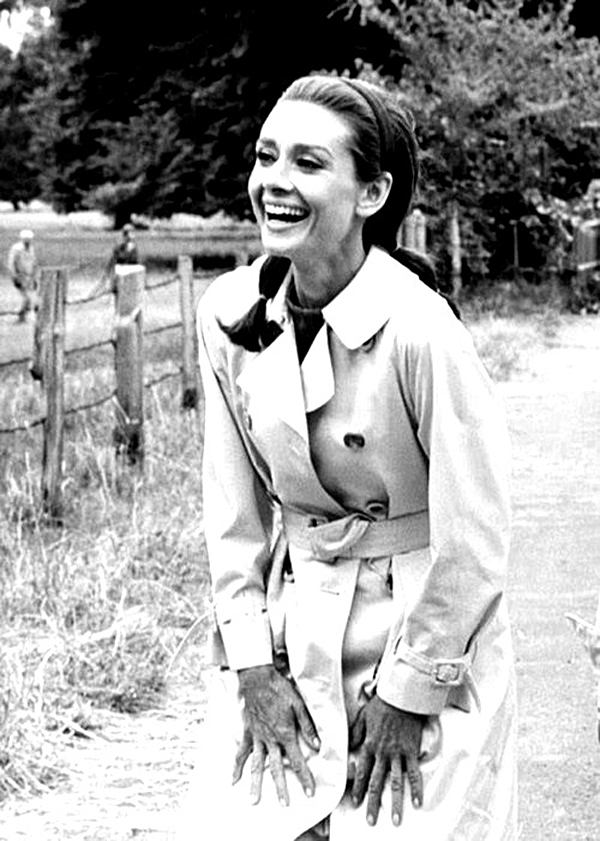
Photo: missmillmag.com
At last! Our website is back up and running following a technical glitch that took an interminable amount of time to resolve. Coincidentally, I’ve been obsessed with time ever since it was confirmed that the upcoming Metropolitan Museum of Art Costume Institute’s exhibition is “About Time: Fashion and Duration.”

Photo: anothermag.com
Even though we live in an Instagram able world, the fact of the matter is that all good things take time. Rome wasn’t built in a day, and it took Sandy Schreier over 50 years to amass her unparalleled collection of 15,000 pieces of haute couture, ready- to- wear and accessories. 80 out of the 165 items that Schreier promised to the Costume Institute will be on view at their 2019 fall exhibition, In Pursuit of Fashion (November 17. 2019 – May 17, 2020).
Using time as a concept is pretty ingenious on the part of Andrew Bolton, Wendy Yu Curator in Charge of the Costume Institute. After all, time is the great equalizer. Everything is measured by time, and everyone is linked by time. We never have enough time, and we will all eventually run out of time. Time marches on. Time’s Up!
The passage of time has given me a better understanding of and appreciation for the enduring timelessness and modernity inherent in great design. There is no question that “fashion is indelibly connected to time,” as Mr. Bolton observed. In honor of The Met’s 150th-anniversary celebration in 2020, the blockbuster exhibition will feature 160 pieces of women’s fashion from the last 150 years along a disruptive timeline. It is virtually impossible to reflect on the fashion timeline of the past century and a half without thinking about the trench coat.
Timeless and timely, the trench is one of the most enduring articles of clothing. This genderless wardrobe workhorse evolved from war staple to fashion staple beginning in the late 1800s. Aquascutum and Burberry both claim the creation of the first trench coat.

Photo: bigpicturemagazine.com
The first time the trench coat was viewed as a fashion item was when Humphrey Bogart wore it in his role as Rick Blaine in the 1942 movie Casablanca. Audrey Hepburn officially put the trench on the map with Breakfast at Tiffany’s (1961) Charade (1963), and Two for the Road (1967). Meryl Streep and Dustin Hoffman both wore trench coats in Kramer vs. Kramer. The iconic Burberry trench was Meryl Streep’s go-to staple in the 1979 movie for which she won an Academy Award for Best Supporting Actress.
Ms. Streep went on to win the Academy Award for Best Actress for Sophie’s Choice (1982) and The Iron Lady (2011). When I read that the legendary actress will co-chair the Met Gala on May 4 along with Anna Wintour, Nicholas Guesquiere, Emma Stone, and Lin-Manuel Miranda, all I could think was, “It’s about time!”

Photo: Vogue.com
There is an undeniable appeal to fashion that references the military. During the HBO Ralph Lauren documentary, “Very Ralph,” the designer named military, along with equestrian and safari as his “three loves.” The military-inspired trench, such as this handsome version from fall 2017 made of herringbone wool, is illustrative of the designer’s timeless fashion aesthetic.

Photo: Vogue.com
Military undertones (the silhouettes and color palette) were inherent throughout the work of Joseph Thimister, who passed away last Wednesday at the age of 57. Thimister’s Spring 2010 “Blood and Guts” Haute Couture collection was a nod to military, war, and blood. The trench was a mainstay throughout his collections, and it was the focal point of his first eponymous line for spring 2000 in Paris.
I had always admired Thimister’s work. He was adept that making wardrobe basics anything but banal. As I began looking through images of Thimister’s collections, I was struck by his consistency, how modern his designs were (there is no expiration date), and how prescient he was.

Photo: Akiquang.wordpress.com
Thimister always empowered women through his strong clean-lined designs. They often resembled chic warriors. Long before it was the norm, Thimister showed men and women together on his runways. His clothes were often interchangeable between the sexes.

Photo: Vogue.com
Thimister routinely mixed masculine and feminine, hard and soft, high and low. He elevated the banal and downplayed the luxurious, which could not be more relevant for our times. Especially notable was the throwaway manner in which he approached evening wear and furs.
Thimister’s designs were glamorous and elegant but at the same time, gutsy and rugged. His clothes were often tarnished, raw-edged, and weathered. They had a patina that comes with age. Josephus embraced minimalism but not cold, sterile minimalism. There was always breadth, soul, and emotion to whatever he designed.
Thimister didn’t use unnecessary accessories or gratuitous ornamentation, relying instead on an array of appropriate footwear (flat and platform sandals, low heeled ankle straps, boots) and practical, statement-making belts that accentuated the waist. His creations were always flattering to the female form. It was obvious that he loved and respected women. Josephus was not one to show clothes so oversized they made them look clownish or like cartoon characters.
During the course of an interview I conducted with Ralph Rucci in 2017, the couturier made this statement: “When I am asked who my favorite designer in the world, is, I always have the same answer: Josephus Thimister. How do you explain that Josephus Thimister is not designing for the house of Dior? How do you explain the house of Balenciaga? And I don’t care if you put it in print. Because I worship Balenciaga.”
